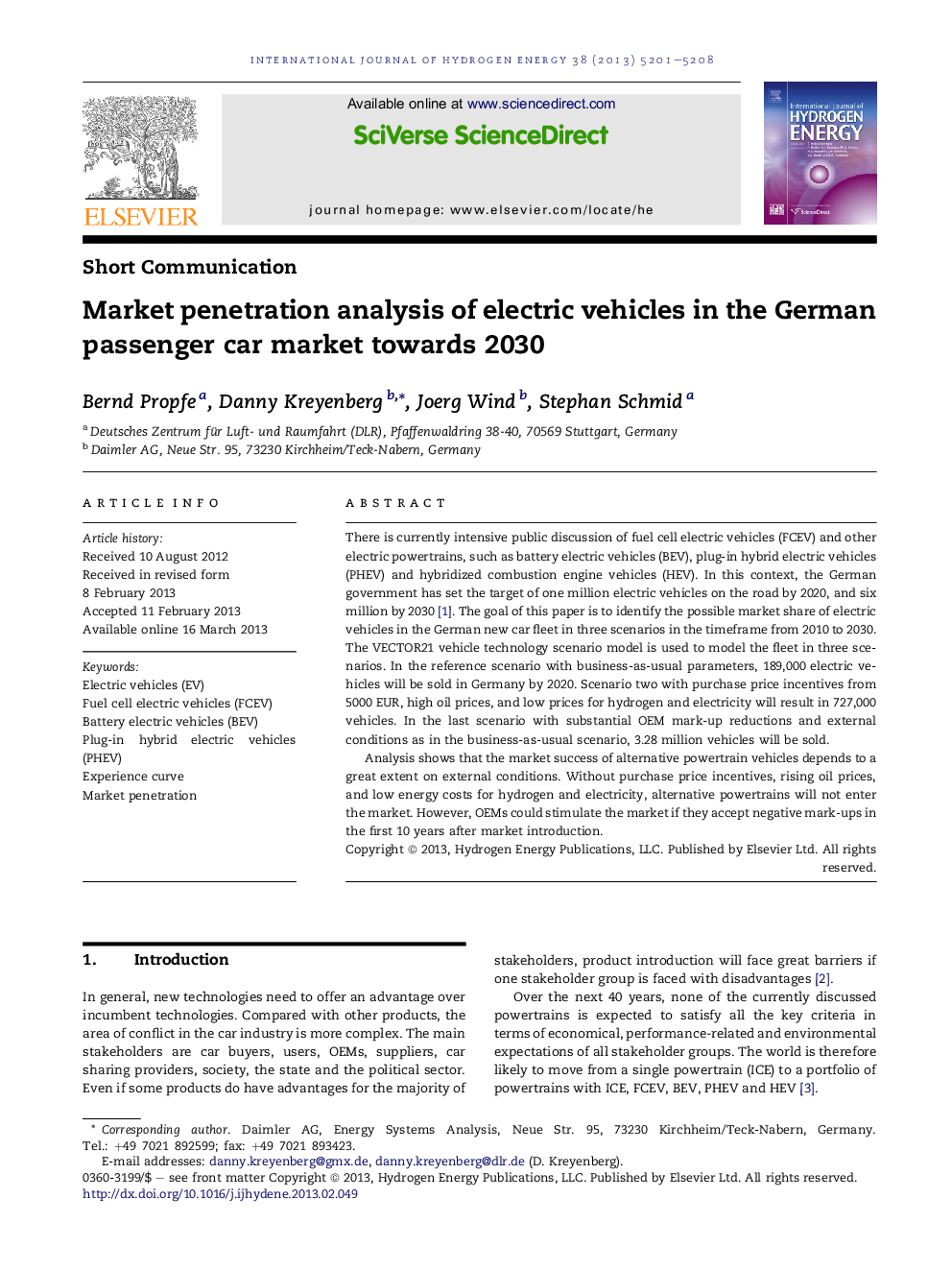| Article ID | Journal | Published Year | Pages | File Type |
|---|---|---|---|---|
| 1277705 | International Journal of Hydrogen Energy | 2013 | 8 Pages |
There is currently intensive public discussion of fuel cell electric vehicles (FCEV) and other electric powertrains, such as battery electric vehicles (BEV), plug-in hybrid electric vehicles (PHEV) and hybridized combustion engine vehicles (HEV). In this context, the German government has set the target of one million electric vehicles on the road by 2020, and six million by 2030 [1]. The goal of this paper is to identify the possible market share of electric vehicles in the German new car fleet in three scenarios in the timeframe from 2010 to 2030. The VECTOR21 vehicle technology scenario model is used to model the fleet in three scenarios. In the reference scenario with business-as-usual parameters, 189,000 electric vehicles will be sold in Germany by 2020. Scenario two with purchase price incentives from 5000 EUR, high oil prices, and low prices for hydrogen and electricity will result in 727,000 vehicles. In the last scenario with substantial OEM mark-up reductions and external conditions as in the business-as-usual scenario, 3.28 million vehicles will be sold.Analysis shows that the market success of alternative powertrain vehicles depends to a great extent on external conditions. Without purchase price incentives, rising oil prices, and low energy costs for hydrogen and electricity, alternative powertrains will not enter the market. However, OEMs could stimulate the market if they accept negative mark-ups in the first 10 years after market introduction.
► Market success of alternative powertrain vehicles depends to a great extent on external conditions. ► Without any external action 189,000 electric vehicles will be sold in Germany by 2020. ► Incentives from 5000 EUR and favourable energy prices will result in 727,000 vehicles by 2020.
